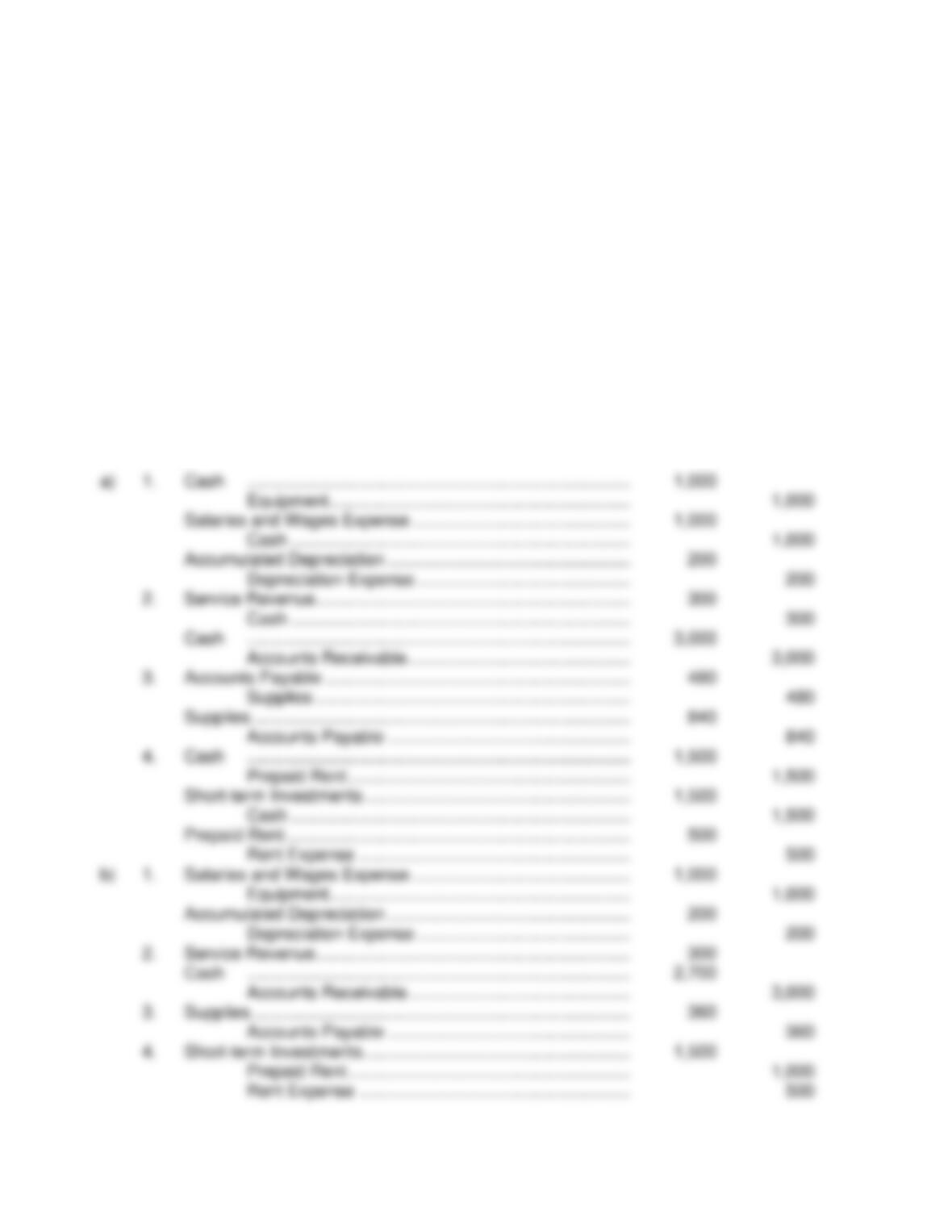114. On May 25, Yellow House Company received a $650 check from Grizzly Bean for
services to be performed in the future. The bookkeeper for Yellow House Company
incorrectly debited Cash for $650 and credited Accounts Receivable for $650. The
amounts have been posted to the ledger. To correct this entry, the bookkeeper should:
a. debit Cash $650 and credit Unearned Service Revenue $650.
b. debit Accounts Receivable $650 and credit Service Revenue $650.
c. debit Accounts Receivable $650 and credit Cash $650.
d. debit Accounts Receivable $650 and credit Unearned Service Revenue $650.
115. On March 8, Black Candy Company bought supplies on account from the Arcade Fire
Company for $550. Black Candy Company incorrectly debited Equipment for $500 and
credited Accounts Payable for $500. The entries have been posted to the ledger. the
correcting entry should be:
a. Supplies .............................................................................. 550
Accounts Payable ......................................................... 550
b. Supplies .............................................................................. 550
Accounts Payable ......................................................... 500
Equipment..................................................................... 50
c. Supplies .............................................................................. 550
Equipment..................................................................... 550
d. Supplies .............................................................................. 550
Equipment..................................................................... 500
Accounts Payable ......................................................... 50
116. The following information is for Sunny Day Real Estate:
Sunny Day Real Estate
Balance Sheet
December 31, 2015
Cash $ 25,000 Accounts Payable $ 60,000
Prepaid Insurance 30,000 Salaries and Wages Payable 15,000
Accounts Receivable 50,000 Mortgage Payable 85,000
Inventory 70,000 Total Liabilities 160,000
Land Held for Investment 85,000
Land 120,000
Buildings $100,000 Common Stock $120,000
Less Accumulated Retained Earnings 250,000 370,000
Depreciation (20,000) 80,000
Trademark 70,000 Total Liabilities and
Total Assets $530,000 Stockholders’ Equity $530,000
The total dollar amount of assets to be classified as current assets is
a. $105,000.
b. $175,000.
c. $190,000.
d. $260,000.









































































































































































